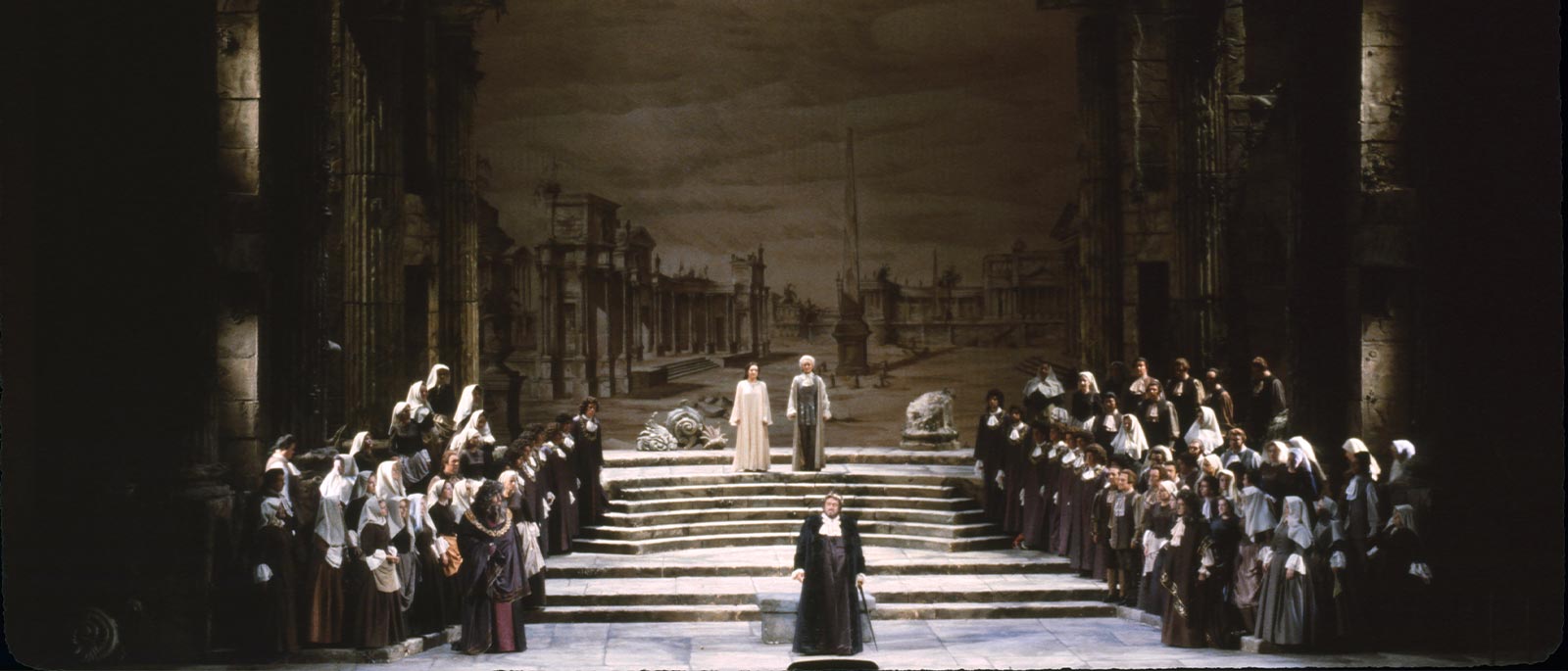
Mozart’s Idomeneo at the Met
By Peter Clark
Mozart’s most famous operas are written in the comic or semi-comic genres known as opera buffa, dramma giocoso, and Singspiel, and were composed in the last five years of his life. But the great genius also created “serious” operas, or opere serie (opera seria, in the singular) as the highly formal, stylized genre is known—the chief examples being his Idomeneo (1781) and La Clemenza di Tito (1791). Even as Don Giovanni and Le Nozze di Figaro gained recognition as genuine masterpieces and cornerstones of the repertory after his death, Mozart’s opere serie became outmoded and were only rarely performed. In 1931, for the 150th anniversary of Idomeneo’s premiere, Richard Strauss created a revised version of that opera for Vienna that drew some attention to the piece. Revivals in 1951 at the Salzburg and Glyndebourne Festivals were, however, the true beginnings of a general re-evaluation of Idomeneo and Mozart’s opera seria style. Eminent conductor Fritz Busch conducted the Glyndebourne performances while the rising young conductor Georg Solti led the Salzburg staging. Glyndebourne regularly revived Idomeneo over the following decades, making it something of a specialty, including new productions in 1974 and 1983. At the 1964 festival, an almost unknown tenor named Luciano Pavarotti sang the role of Idamante (usually given to a tenor at Glyndebourne rather than the customary mezzo-soprano).
In 1975, the young conductor James Levine became the Met’s music director, bringing with him much enthusiasm for exploring new repertory and a particular interest in Mozart. For the Met’s 1982–83 season, Levine planned the company premiere of Idomeneo (pictured at the top of this page), with an all-star cast that included Pavarotti in the title role, Romanian soprano Ileana Cotrubas as Ilia, American mezzo Frederica von Stade as Idamante, and German soprano Hildegard Behrens as Elettra. For the production, Levine turned to one of his favorite collaborators, director Jean-Pierre Ponnelle, with whom he had worked at the Salzburg Festival on, among other things, Mozart’s late opera seria La Clemenza di Tito. Ponnelle set both Idomeneo and La Clemenza di Tito amidst the stone edifices of antiquity, but the singers were costumed in the manner of 18th-century opera, thus reflecting Mozart’s re-creation of a Classical drama using the aesthetic expressions of his own time. The Levine/Ponnelle team brought their Idomeneo to Salzburg in the summer of 1983 and then added La Clemenza di Tito to the Met’s repertory in the fall of 1984 using very much the same approach.
Carol Vaness as Elettra
Despite Pavarotti’s earlier experience as Idamante at Glyndebourne, the title role of Idomeneo was an outlier in the great tenor’s repertory. Originally composed for the aging tenor Anton Raaff, Idomeneo lay rather low in Pavarotti’s vocal range and contained none of the climactic high notes that thrilled his public. On the other hand, his natural expressiveness with the Italian text and his famed resplendent vocal timbre made for a moving portrayal of the tortured father.
The Met’s other leading tenor of the day, Plácido Domingo, headlined two revivals in 1994 and 2001, both with Levine on the podium. By casting the world’s two most famous tenors in the leading part, the Met placed Idomeneo in the public limelight and assured its integration into the repertory. Wagnerian tenors Siegfried Jerusalem and Ben Heppner (pictured above) also offered their interpretations of the title role, while tenors more traditionally associated with Mozart, such as David Rendall, Anthony Rolfe Johnson, and, most recently, Matthew Polenzani, have also made their marks in the part.
Since 1982, Idomeneo has been a fairly regular presence in the Met repertory. While the principal artists who have enjoyed success in Idomeneo are too numerous to name, a few should be noted. Frederica von Stade’s (pictured above) elegant vocalism and presence as Idamante graced two revivals after the premiere season and made her the most frequent performer of the role to date. Swedish mezzo Anne-Sofie von Otter sang the part of Idomeneo’s long lost son with verve and style in 1991 and 1994. (The Met has always adhered to Mozart’s original version with a mezzo-soprano Idamante as opposed to his later revision made for tenor).
The demands of the role of Elettra are famously daunting, but her mad scene near the opera’s end can bring the house down. Following a precedent from the 1950s, the Met originally cast a Wagnerian soprano, Hildegard Behrens, in the part. She made a sensation in the part in 1982, which she repeated in 1986. Carol Vaness, a rich-voiced soprano who brought a more authentic Mozartean style to the role, later triumphed as Elettra in three seasons and holds the record for the most performances of the part.
Several sopranos have distinguished themselves in the lyrical part of Ilia, including Benita Valente, Marvis Martin, Hei-Kyung Hong, and Dawn Upshaw, all of whom brought lilting musicality to the Trojan princess’s expressions of love for Idamante.
In addition to the premiere, Levine conducted five of the seven revivals, including the most recent one in 2017 (pictured above), which boasted a sterling cast that included, in addition to Polenzani as Idomeneo, Nadine Sierra as Ilia, Elza van den Heever as Elettra, and Alice Coote as Idamante.
Peter Clark is the Met’s Director of Archives